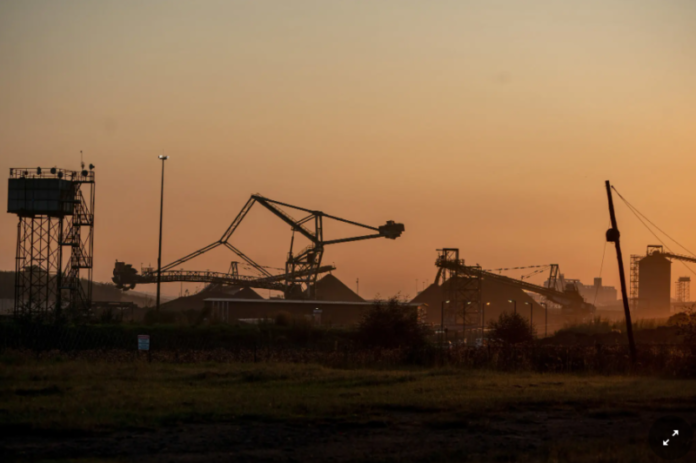South Africa generates 80 percent of its electricity by burning coal, more than any other industrialized nation. Some 200,000 people are directly employed by the coal mines, coal transports and coal-fired power plants that dot the flatlands east of Johannesburg, but the prosperity of the rest of the nation also rests on a foundation of black rock.
Now, the South African government, with the help of the United States and European nations, is embarking on an audacious plan to quit coal without undermining economic growth. If it works, the proposed transition to solar and wind power could fuel faster growth and create a template for coal-dependent nations to confront climate change. This is a significant opportunity, and it deserves support and attention.
The United States has committed more than $1 billion as part of an $8.5 billion international aid package to catalyze South Africa’s shift to renewable energy, and, after two years of talks about the details, the government in Pretoria is to deliver a plan in February for carrying it out.
The proposed aid package is part of a broader shift in the international response to climate change. Windy talk about the necessity for wealthy countries to help less wealthy countries is finally turning tangible. In November, a group of nations, including the United States, committed $20 billion for a similar partnership with Indonesia, then made a $15.5 million commitment to Vietnam in December. Talks are underway with other nations, including Senegal and India.
America’s own response to climate change remains inadequate, and Americans are suffering as a result, but even if the United States stopped burning fossil fuels tomorrow — magically and completely — it wouldn’t much impede the march of climate change. The country needs to help the rest of the world burn less fossil fuel, too. South Africa is a promising place to start.
South Africa needs more electricity. The country’s coal-fired power plants are regularly overwhelmed by demand, forcing the national power company, Eskom, to impose rolling blackouts. The blackouts were worse than ever last year, leaving millions of customers in major cities without power for hours at a time, disrupting the economy and slowing growth. To generate more electricity, Eskom is completing two coal-burning power plants that will be among the world’s largest, projects that have been financed in part by billions of dollars in World Bank loans.
Most leaders in South Africa’s government regard those plants as the end of an era. Climate change is taking a growing toll on the country. Like many countries that are far from the Equator, South Africa is experiencing drastic changes in temperature, and it has been plagued by both droughts and flooding.
Many of the country’s existing coal-fired power plants need to be replaced in the coming years, and the rapid decline in the cost of wind and solar power generation means that renewable energy can be substituted for coal at relatively little additional cost. Last year, the country shut down the first of those older power stations. It plans to build a solar and wind farm on the site — once again with financing provided by the World Bank.
The international aid package now under discussion with the United States and European partners is intended to accelerate the energy transition. Under the South African government’s current plans, which seek to ease the price of electricity during the transition, the country’s power plants still would produce 3.9 gigatons of carbon between now and 2050. A South African consultancy, Meridian Economics, estimated in a 2020 report that a faster transition could prevent roughly half of those emissions.
The South African government has estimated that it will require about $98 billion over the next five years to start a faster transition — and several times more to finish the work. The $8.5 billion in aid, which represents only a small fraction of that total, is meant to help South Africa raise the rest.
Foreign aid can support investments in infrastructure that are less attractive to private investors. For example, South Africa needs to build transmission lines to connect the best sites for generating renewable energy with the people who need electricity. A study of a similar effort in Chile, completed in 2019, found new transmission lines led to an increase of 51 percent in solar generation, while sharply reducing prices for urban households.
The workers who are likely to lose their jobs also will need help — and easing the impact on their lives and communities is necessary to maintain political support.
The scale of the aid represents a significant political breakthrough. But there is a very real danger that it’s not enough. Only 4 percent of the aid for South Africa is in the form of grants. The rest basically amounts to helping South Africa borrow money from foreign lenders to whom it already is heavily indebted. Even without any borrowing for energy transition, the national debt is equal to more than two-thirds of gross domestic product.
For South Africa, there also will be a temptation to treat solar and wind as supplements rather than replacements for coal power. Political leaders have made clear that they are not willing to sacrifice growth, and even as the government pursues its plans, some have openly argued that coal remains the country’s best option.
The hardest work, in other words, remains ahead. Given the urgency of addressing climate change, and the momentum to extend similar aid to other nations, it will be crucial to learn, and to adjust, quickly.



